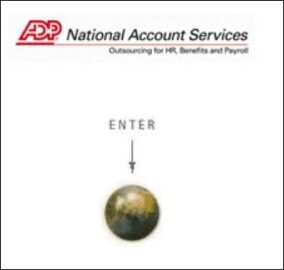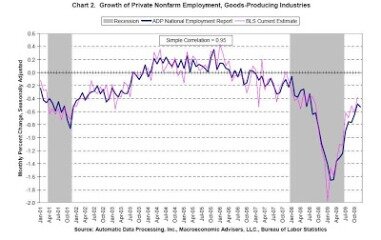
Current assets are assets that can be converted into cash within one fiscal year or one operating cycle. Current assets are used to facilitate day-to-day operational expenses and investments. As a result, short-term assets are liquid, meaning they can be readily converted into cash. There are a few different types of assets, but not all of them are considered current assets. For example, property, plant, and equipment are not typically considered current assets. Current ratio measures your ability to pay your current liabilities with your current assets.
- Current assets are typically listed in the balance sheet in the order of liquidity or how quick and easy it is to turn them into cash.
- All such information is provided solely for convenience purposes only and all users thereof should be guided accordingly.
- These multiple measures assess the company’s ability to pay outstanding debts and cover liabilities and expenses without liquidating its fixed assets.
- It allows management to reallocate and liquidate assets—if necessary—to continue business operations.
- Depreciation helps a company avoid a major loss when a company makes a fixed asset purchase by spreading the cost out over many years.
- Expected or average financial ratios may vary depending on the business, and depending on where it is in the business life cycle.
Overstating current assets can mislead investors and creditors who depend on this information to make decisions about the company. Management isn’t the only one interested in this category of assets, however. Investors and creditors use several different liquidity ratios to analyze the liquidity of the company before they invest in or lend to it.
How to calculate current assets?
Non-Current Assets is an account where assets that cannot be quickly converted into cash—often selling for less than the purchase price—are entered. If a business makes sales by offering longer credit terms to its customers, some of its receivables may not be included in the Current Assets account. Current assets are just one part of a company’s overall financial picture.

Inventory—which represents raw materials, components, and finished products—is included in the Current Assets account. However, different accounting methods can adjust inventory; at times, it may not be as liquid as other qualified current assets depending on the product and the industry sector. Marketable Securities is the account where the total value of liquid investments that can be quickly converted to cash without reducing their market value is entered. For example, if shares of a company trade in very low volumes, it may not be possible to convert them to cash without impacting their market value. These shares would not be considered liquid and, therefore, would not have their value entered into the Current Assets account.
Xero Small Business Guides
The balance sheet displays current assets, current liabilities, fixed assets, long term debt and capital of Nestle as on that date. Assets that get easily converted into cash or utilized through the normal operating cycle of the business or within one year (whichever is greater) are current assets. Here, the operating cycle means the time it takes to buy or produce inventory, sell the finished products and collect cash for the same. Fixed assets are noncurrent assets that a company uses in its production of goods and services that have a life of more than one year. Fixed assets are recorded on the balance sheet and listed as property, plant, and equipment (PP&E).

Fixed or noncurrent assets, on the other hand, are those assets that are not expected to be converted into cash within one year. Unlike the cash ratio and quick ratio, it does not exclude any component of the current assets. The current ratio evaluates the capacity of a company to pay its debt obligations using all of its current assets. A negative working capital, on the other hand, means that the company does not have enough current assets to pay its current liabilities. Although prepaid expenses are not technically liquid, they are listed under current assets because they free up capital for future use.
Current Assets vs. Fixed Assets: What’s the Difference?
A current asset is a company’s cash and its other assets that are expected to be converted to cash within one year of the date appearing in the heading of the company’s balance sheet. However, if a company has an operating cycle that is longer than one year, an asset that is expected to turn to cash within that longer operating cycle will be a current asset. Yes, cash is a current asset, as are “cash equivalents” or things that can quickly be converted into cash, like short-term bonds and investments and foreign currency. Current assets are those assets that can be converted into cash within one year.
Robinhood Reports Second Quarter 2023 Results – GAAP Net … – Exchange News Direct
Robinhood Reports Second Quarter 2023 Results – GAAP Net ….
Posted: Wed, 02 Aug 2023 20:35:17 GMT [source]
According to Apple’s balance sheet, it had $135 million in the Current Assets account it could convert to cash within one year. This short-term liquidity is vital—if Apple were to experience issues paying its short-term obligations, it could liquidate these assets to help cover these debts. Current assets are typically liquid, meaning they can be quickly converted into cash. This includes cash itself, as well as investments, accounts receivable, and inventory. Prepaid expenses are payments made in advance for a future service that has not yet been provided. Prepaid expenses are recorded as a current asset because the value of the prepaid expense should be realized over the near term.
Current Assets
In accounting, a company’s current assets include the cash it has on hand and the other assets that will soon be turned into cash. The total current assets figure is of prime importance to company management regarding the daily operations of a business. As payments toward bills and loans become due, management must have the necessary cash.
Noncurrent assets are depreciated in order to spread the cost of the asset over the time that it is used; its useful life. Noncurrent assets are not depreciated in order to represent a new value or a replacement value but simply to allocate the cost of the asset over a period of time. The portion of ExxonMobil’s balance sheet pictured below from its 10-K 2021 annual filing displays where you will find current and noncurrent assets. Current assets are any asset a company can convert to cash within a short time, usually one year. These assets are listed in the Current Assets account on a publicly traded company’s balance sheet.
Current Assets: Definition, Lists, and Formula
When a company receives the benefit of the prepaid expense, it is expensed. In financial statements, these groups of current assets are recorded in the balance sheet and show the value at the end of the reporting date. The following is the list of current assets that normally occur or report in financial statements.

VXF met the challenge so I will allocate 25% of my funds to it for August. I have made changes to Table 2 below after I received a comment from a reader. Table 2 shows new columns to better (more accurately) reflect my investment results. The fifth column, $100K SPY, shows the returns of just investing $100,000 and keeping it all allocated to SPY.
Accounting software
He currently researches and teaches economic sociology and the social studies of finance at the Hebrew University in Jerusalem. These are payments made in advance, such as insurance premiums or rent. AGG remains inside this area of consolidation going back to May 2022. Chart 2 shows that SPY gained 3.27% in July which is another nice gain. SPY had a bullish candle, remains in bullish alignment, and has risen for five consecutive months. Large cap US equities are doing well and for that reason I will maintain a large position in SPY for the month of August.
To get a complete picture, you also need to look at things like liabilities and equity. In the balance sheet, inventories are recorded under the current assets section in one line, and an explanation will be shown in Noted to Financial Statements. As long as this credit period is less than one year, we class it into current assets. Some company wants to motivate their staff, and they allow their staff to borrow the company’s money for a short-term period like three to six months. For example, the company sells the goods to customers for a cash amount of $1,000.
MKS Instruments Reports Second Quarter 2023 Financial Results – GlobeNewswire
MKS Instruments Reports Second Quarter 2023 Financial Results.
Posted: Wed, 02 Aug 2023 20:30:00 GMT [source]
This includes all of the money in a company’s bank account, cash registers, petty cash drawer, and any other depository. This can include domestic or foreign currencies, but investments working as a learning specialist at adp are not included. Current assets are short-term assets, which are held for less than a year, whereas fixed assets are typically long-term assets, held for more than a year.
Another way current assets can be used on your balance sheet is for calculating liquidity ratios. Creditors are interested in the proportion of current assets to current liabilities, since it indicates the short-term liquidity of an entity. In essence, having substantially more current assets than liabilities indicates that a business should be able to meet its short-term obligations.

